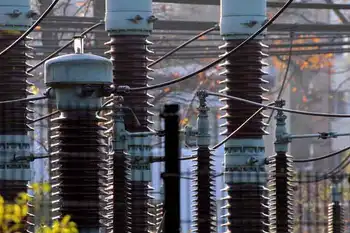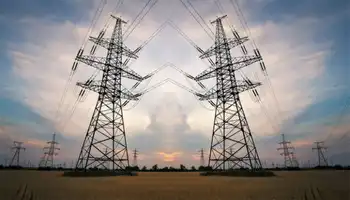U.S. power firm to exploit energy from the space
By The Peninsula Qatar
Protective Relay Training - Basic
Our customized live online or in‑person group training can be delivered to your staff at your location.

- Live Online
- 12 hours Instructor-led
- Group Training Available
Now, PG&E wants to go into outer space to exploit a new energy source.
A start-up called Solaren Corp., based in seaside Manhattan Beach, south of Los Angeles, is laboring to eventually launch a giant array of solar power collectors into an orbit 23,000 miles above the central California city of Fresno and beam the energy back to earth. PG&E has signed a contract to take the power — if Solaren can make the technology work.
The proposal is a potential energy game-changer, supporters argue. But critics denounce it as literally pie in the sky.
The scheme highlights a growing dispute as utilities struggle to meet ambitious requirements for energy from renewable sources: Should electricity come from big, bold projects such as huge desert fields of sunlight-reflecting mirrors or should it come from smaller, close-to-the-user efforts such as rooftop solar panels? Should electron delivery belong to big power companies or do-it-yourselfers?
Solaren wonÂ’t discuss details or specific costs of its plan to generate enough electricity to run 150,000 homes, other than to ballpark the total price tag at north of $2 billion. ItÂ’s asked utility regulators to keep that information confidential, for now.
But executives insist that they can put together the technology by 2016 to harness energy that constantly bathes the Earth from 93 million miles away.
“If our numbers are anywhere near where we think they will be, we will be able to provide power at a cost that’s comparable with anything on Earth that is much cleaner and all from space,” says Gary Spirnak, Solaren’s chief executive officer.
Spirnak points to a 2007 study by the U.S. National Security Space Office as evidence that such a power system is feasible. “While significant technical challenges remain, space-based solar power is more technically executable than ever before, and current technological vectors promise to further improve its viability,” the study said.
“There is enormous potential for energy security, economic development, improved environmental stewardship, advancement of general space faring and overall national security for those nations that construct and possess a space-based solar power capability.”
Regulators at the Public Utilities Commission are reserving judgment, other than to say they are reviewing the contract between Solaren and PG&E, a unit of PG&E Corp. They are charged with ensuring the deal helps the utility meet a legal requirement to get one-fifth of its power from renewable sources by no later than 2012. PG&E has asked for a ruling before October 29.
Consumer advocates and more earth-bound proponents of renewable energy are skeptical.
California will never meet its looming 20 percent renewable requirement, let alone a more ambitious 30 percent goal in 2030, if utilities and regulators continually embrace expensive, flashy and unproven technologies, they charge. Policymakers, instead, should stick with less exciting but reliable alternative energy sources, such as geothermal, wind and centralized solar, using mirrors to concentrate sun power, which have been operating commercially for decades.
“There are a lot of speculative plays,” said V. John White, director of the Center for Energy Efficiency and Renewable Technology in Sacramento. “We have a lot of PowerPoints floating around that I don’t think will turn into power plants.”
The concept behind space solar power is simple, Solaren says.
“Four or five rocket launches” would be needed to put enough solar collectors into a stationary orbit to produce 200 megawatts of power, about half the output of a modern, land-based, natural-gas-fired power plant. The solar energy would be converted to radio waves and beamed to a receiving station in Fresno, leaving unscathed any birds or aeroplanes that get in the way of the highly diffused beam. From there, it would be converted to either alternating or direct electric current and dispatched to customers via high-voltage transmission lines.
Nothing on this scale has been attempted, SolarenÂ’s Spirnak concedes, but the basic technology is proven. Solar energy has powered commercial communications satellites for more than four decades. The satellites use the sunÂ’s power, available 24 hours a day because there is no night in space, to make electricity. The electricity is turned into radio waves to bounce television, telephone and other signals around the globe.
Experience with larger scale, experimental radio transmissions that were converted to electrical power is limited, PG&E wrote in a regulatory filing. In 1974, the NASA Jet Propulsion Laboratory at the California Institute of Technology transmitted 34 kilowatts of energy a distance of about a mile. Last year, a JPL scientist transmitted a small amount of power generated by ground-based solar cells for 92 miles between two Hawaiian islands.
“The challenge,” says PG&E spokesman Jonathan Marshal is “putting enough hardware up in space and doing it economically.”
Raising more than $2 billion during a recession also wonÂ’t be easy, though having a guaranteed power purchase agreement with PG&E should carry some weight with potential investors, Spirnak says.
However, Solaren and PG&E stress that ratepayers wonÂ’t pay a penny of SolarenÂ’s costs until the company starts streaming satellite power into their homes and businesses.
PG&E isnÂ’t investing in the project up front, agreeing merely to buy power once itÂ’s flowing; thatÂ’s common practice in the utility business.
“There’s no risk to our customers. They’ll pay only for the power that’s delivered,” Marshal says. “We’re not investing in the project or paying advance fees.”
Consumer advocates say they’re heartened that PG&E isn’t asking customers to pay up front for what might turn out to be little more than a science fiction fantasy. “We think the chance of this company ever getting this solar farm — literally and figuratively — off the ground is quite remote,” says Mark Toney, executive director of the Utility Reform Network, a San Francisco-based group that monitors investor-owned utilities.
PG&E, which provides 12 percent of its power from renewable sources, is grandstanding when it touts contracts to buy space power, Toney says. It should be putting more “focus into local renewables closer to home,” such as placing solar panels on the roofs of homes and businesses, he says.
Solaren’s plan, though unprecedented, represents a “very serious” effort to put an admittedly “trial size” power plant in space, says Frederick H. Pickel, an energy consultant and engineering economist from Los Angeles.
“If this works, it changes the whole game,” he says. “If they manage to reduce the cost sufficiently for space-based solar generation, the electric game changes, the natural gas game changes and, perhaps, even the oil game changes.”











